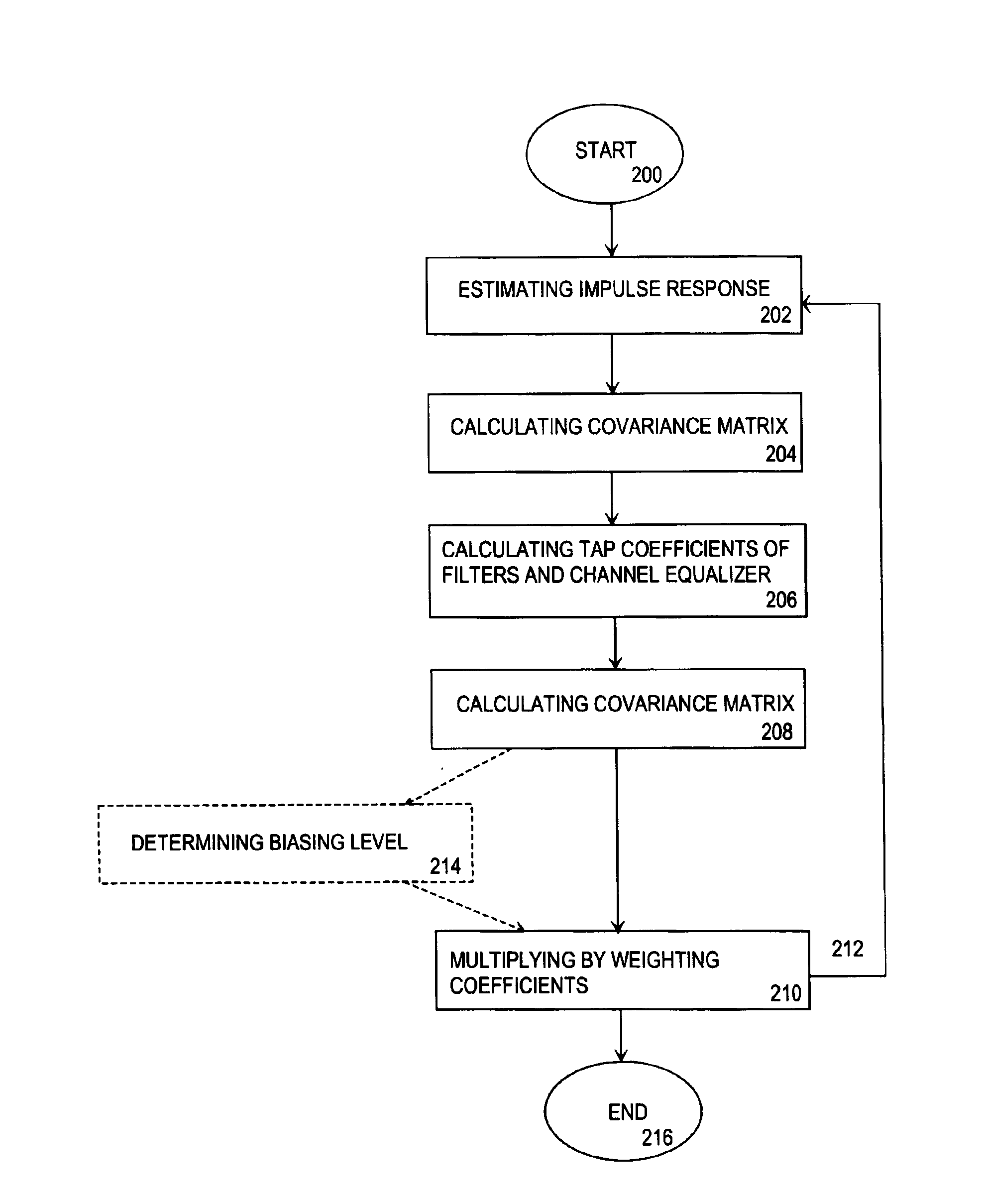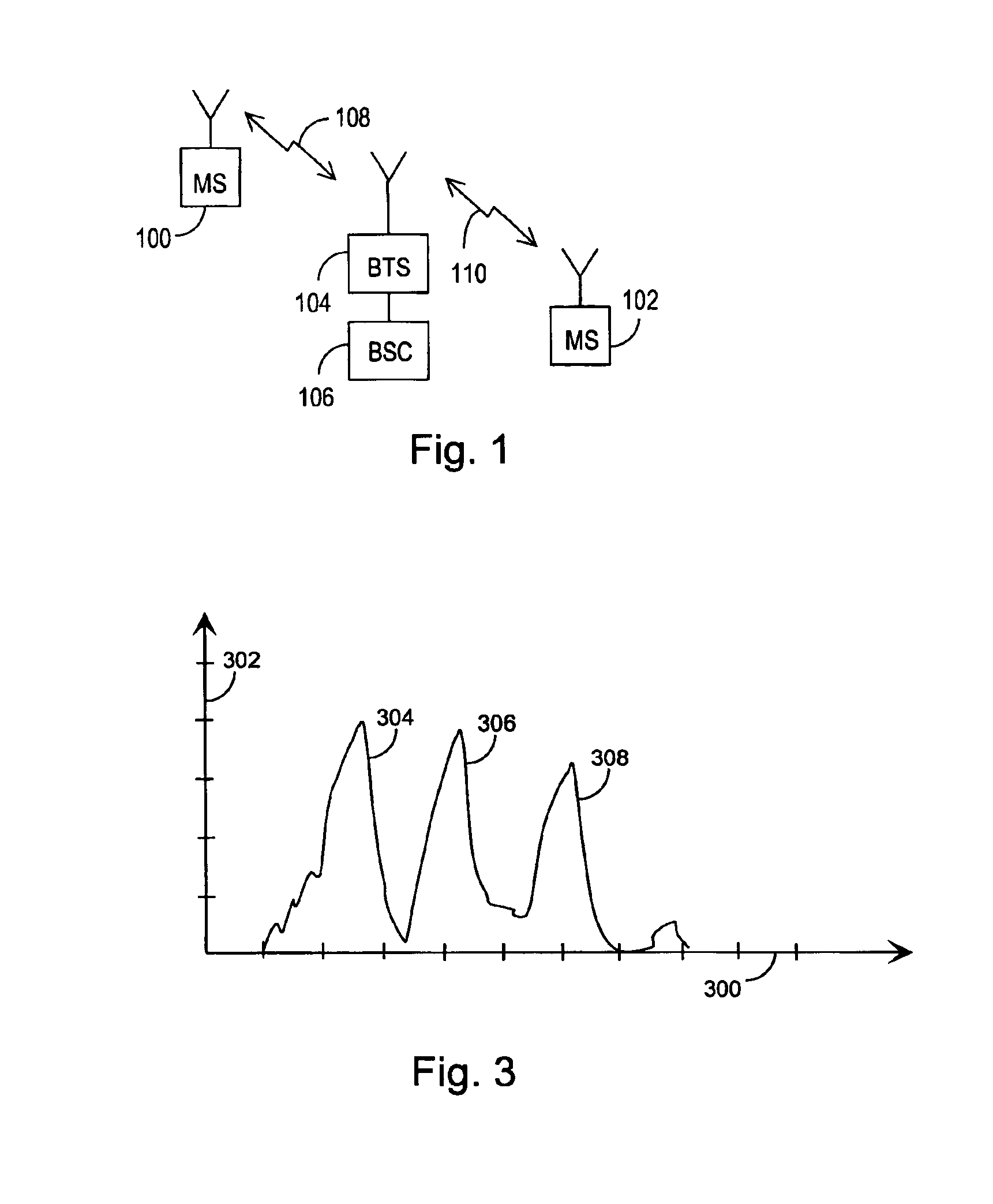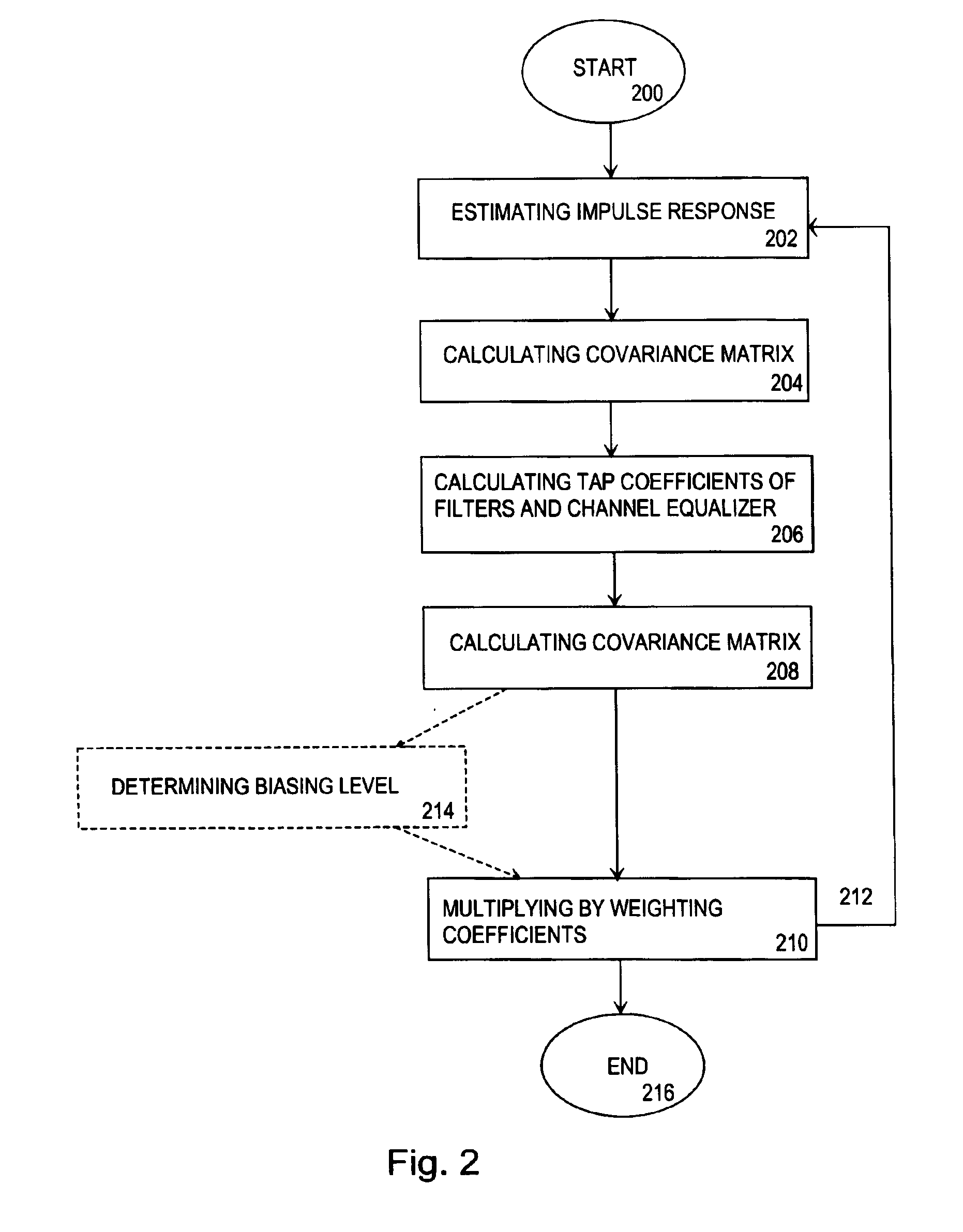Optimization of channel equalizer
a channel equalizer and channel decoding technology, applied in the field of noise power estimation in a radio receiver, can solve the problems of intersymbol interference in band-limited channels, and the problem is particularly serious at high transmission rates in data transfer applications, so as to achieve the effect of improving channel decoding performance and ensuring channel decoding performan
- Summary
- Abstract
- Description
- Claims
- Application Information
AI Technical Summary
Benefits of technology
Problems solved by technology
Method used
Image
Examples
Embodiment Construction
[0023]The invention can be applied to all wireless communication system receivers, in network parts, such as base transceiver stations, and in different subscriber terminals as well.
[0024]FIG. 1 illustrates, in a simplified manner, a digital data transfer system to which the solution of the invention can be applied. The system is part of a cellular radio system comprising a base transceiver station 104 having a radio connection 108 and 110 to subscriber terminals 100 and 102 that can be fixedly positioned, located in a vehicle or portable terminals to be carried around. The transceivers of the base transceiver station are connected to an antenna unit, which is used for implementing a duplex radio connection to a subscriber terminal. The base transceiver station is further connected to a base station controller 106, which conveys the subscriber terminal connections to other parts of the network. In a centralized manner, the base station controller controls several base transceiver st...
PUM
 Login to View More
Login to View More Abstract
Description
Claims
Application Information
 Login to View More
Login to View More - R&D
- Intellectual Property
- Life Sciences
- Materials
- Tech Scout
- Unparalleled Data Quality
- Higher Quality Content
- 60% Fewer Hallucinations
Browse by: Latest US Patents, China's latest patents, Technical Efficacy Thesaurus, Application Domain, Technology Topic, Popular Technical Reports.
© 2025 PatSnap. All rights reserved.Legal|Privacy policy|Modern Slavery Act Transparency Statement|Sitemap|About US| Contact US: help@patsnap.com



